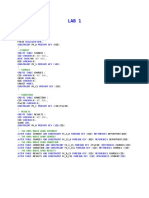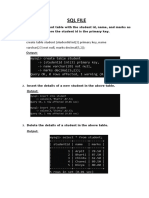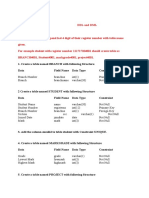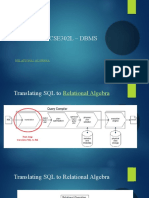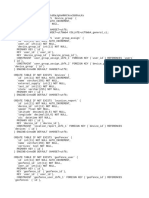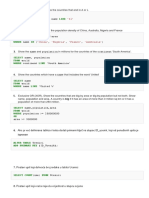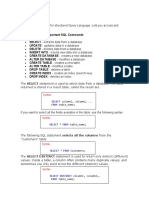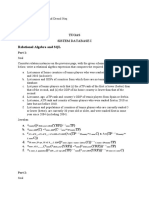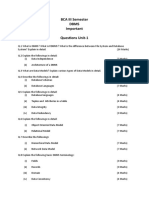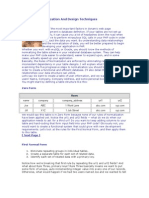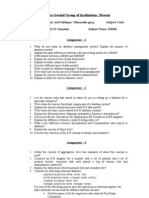0% found this document useful (0 votes)
6 views6 pagesSQL Practical
The document outlines the structure and operations for two database tables: Students and Marks, including their respective columns, data types, and constraints. It details various SQL commands for Data Definition Language (DDL), Data Manipulation Language (DML), SELECT queries, aggregate functions, and JOIN operations. The document provides specific SQL statements for creating, altering, and querying the tables, as well as examples of data insertion and updates.
Uploaded by
subhayu112007Copyright
© © All Rights Reserved
We take content rights seriously. If you suspect this is your content, claim it here.
Available Formats
Download as DOCX, PDF, TXT or read online on Scribd
0% found this document useful (0 votes)
6 views6 pagesSQL Practical
The document outlines the structure and operations for two database tables: Students and Marks, including their respective columns, data types, and constraints. It details various SQL commands for Data Definition Language (DDL), Data Manipulation Language (DML), SELECT queries, aggregate functions, and JOIN operations. The document provides specific SQL statements for creating, altering, and querying the tables, as well as examples of data insertion and updates.
Uploaded by
subhayu112007Copyright
© © All Rights Reserved
We take content rights seriously. If you suspect this is your content, claim it here.
Available Formats
Download as DOCX, PDF, TXT or read online on Scribd
/ 6




































